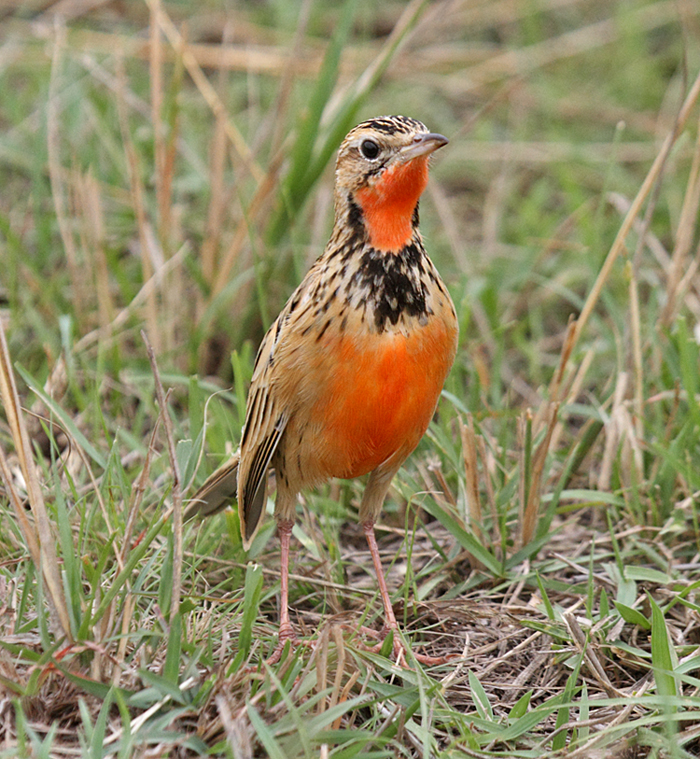
Macronyx ameliae
TAXONOMY
Macronyx ameliae de Tarragon, 1845, Durban, South Africa.
OTHER COMMON NAMES
English: Pink-throated longclaw; French: Sentinelle а gorge
rose; German: Rubinkehlpieper; Spanish: Bisbita de Pecho
Rosado.
PHYSICAL CHARACTERISTICS
7.5–8 in (19–20 cm); 1.1–1.4 oz (30–40 g). Mottled upperparts
with orange-red upper throat, blackish band across lower
throat, and rosy breast.
DISTRIBUTION
Southwestern Kenya, north and southwest Tanzania, west to
Angola and south to Botswana, Zimbabwe and coastal east
South Africa.
HABITAT
Short or tussocky grassland, usually permanently or seasonally
moist and near marshes or open water.
BEHAVIOR
Territorial when breeding; normally in pairs or in family
groups. Usually shy. Male sings from top of bush or in song
flight. Some movements in relation to seasonal rainfall.
FEEDING ECOLOGY AND DIET
Takes insects, sometimes small frogs. Forages in grass or on
bare ground; sometimes catches prey in flight.
REPRODUCTIVE BIOLOGY
Monogamous; breeds mainly during or after rains. Nest is a
cup of grass, lined rootlets or grass, placed in grass tuft; built
by female. Lays two to four eggs; incubation is 13–14 days by
female. Young leave nest after about 16 days.
CONSERVATION STATUS
Near Threatened in South Africa, where range has contracted
significantly through loss of coastal habitat; threatened by
HABITAT
loss in coastal south Mozambique.
SIGNIFICANCE TO HUMANS
None known.
Other popular Animals
Photo Gallery of - Rosy-breasted longclaw
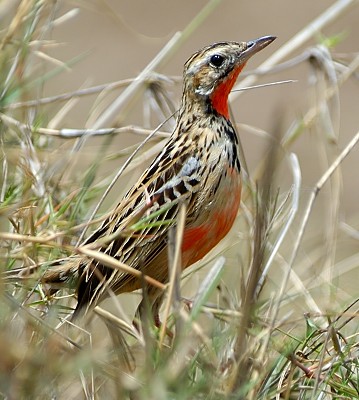
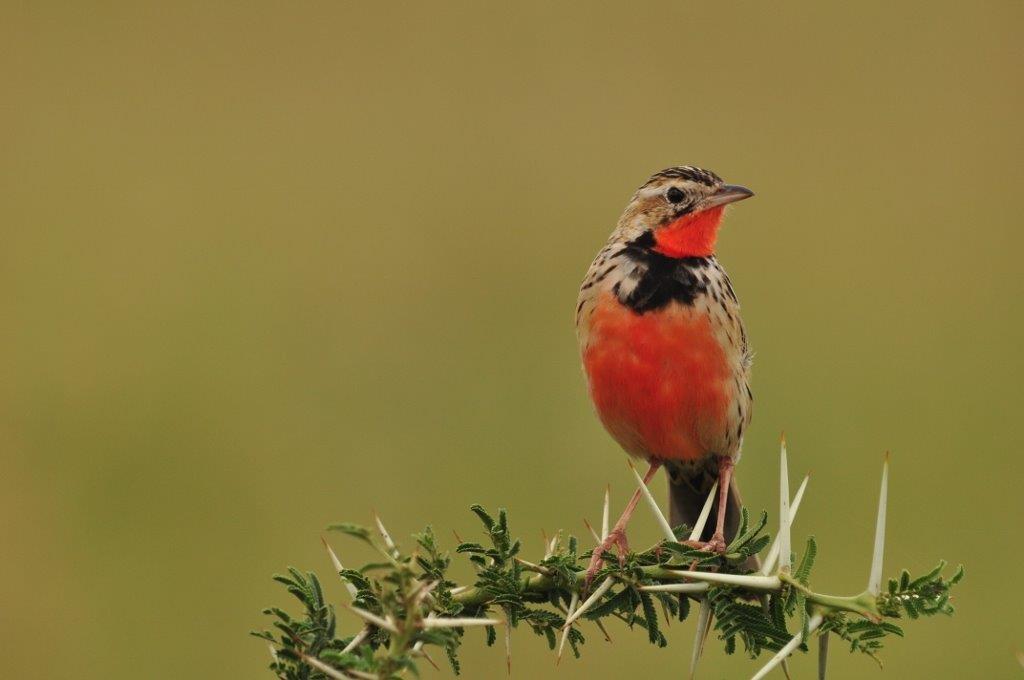
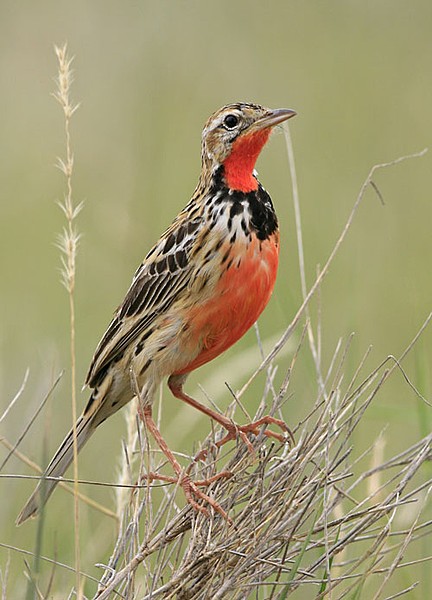
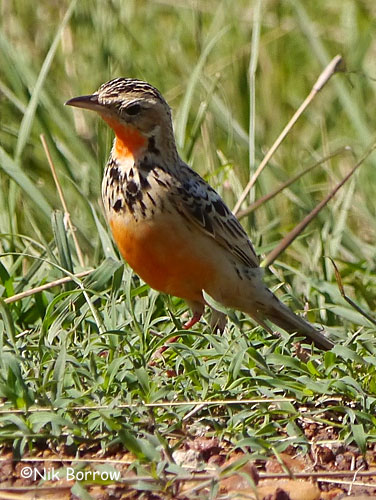
 Animalia Life
Animalia Life